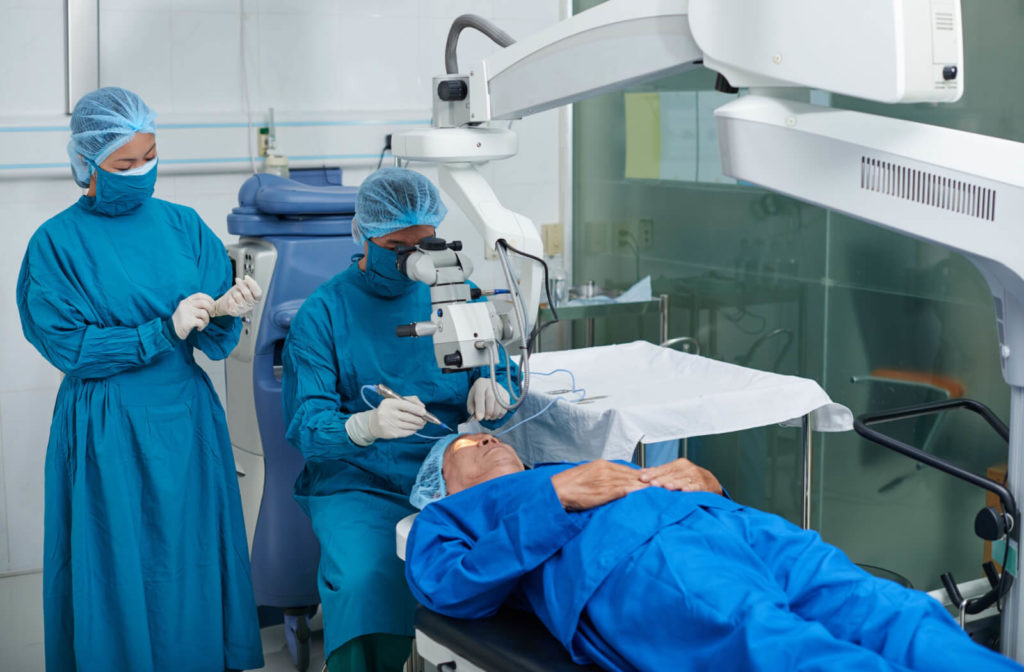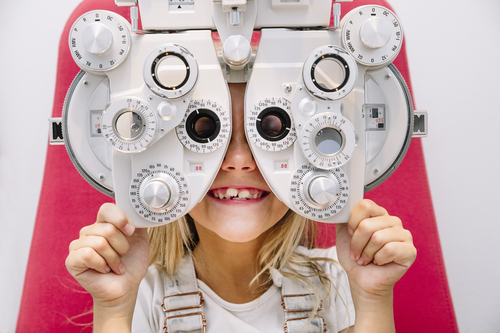The Value of Regular Examinations with an Eye Doctor Optometrist
The Value of Regular Examinations with an Eye Doctor Optometrist
Blog Article
Checking Out the current Technological Innovations in Optometry and What They Mean for Eye Doctors
From the accuracy of Optical Comprehensibility Tomography to the nuanced understandings used by AI-driven analysis tools, these advancements are establishing brand-new standards in client evaluation and treatment. As these improvements permeate the practice, eye doctors are encountered with the difficulty of welcoming these tools to improve person outcomes.
Technologies in Diagnostic Tools
Progressing the area of optometry, innovations in analysis tools have revolutionized the method eye care professionals analyze and identify eye conditions and visual problems. The previous decade has observed significant technical innovations, enabling more precise and thorough examinations.
An additional trick development is the intro of innovative corneal topography systems, which map the surface area curvature of the cornea with precision. These devices are specifically useful for fitting contact lenses and detecting corneal disorders. In addition, electronic retinal imaging has actually changed typical ophthalmoscopy, supplying in-depth, panoramic sights of the retina that help with complete visual assessments.
The development of wavefront aberrometry has also been vital, allowing the analysis of refractive mistakes with unrivaled precision (Opticore Optometry). This innovation aids in personalizing restorative lenses and improving medical end results for refractive surgical treatments. Collectively, these diagnostic advancements equip eye doctors to deliver exceptional person care, making certain very early treatment and tailored therapy techniques, ultimately improving aesthetic wellness results
AI in Individual Monitoring
Building on the structure of innovative diagnostic devices, the unification of fabricated intelligence (AI) in patient administration stands for a transformative leap for optometry. AI systems are progressively employed to improve performance, precision, and customization in client treatment.
Additionally, AI-driven platforms help with structured individual interactions and management processes. Automated scheduling, digital appointments, and individualized follow-up plans not just boost person fulfillment however additionally enhance time monitoring for specialists. These systems can triage people based upon the necessity of their problems, ensuring that those in vital demand receive timely attention.
Moreover, AI improves decision-making by offering eye doctors with evidence-based suggestions and treatment paths. By incorporating information from electronic health documents, AI devices use understandings that inform medical decisions, minimizing the threat of mistakes and enhancing patient end results. As AI remains to advance, its duty in patient management will likely broaden, improving the landscape of optometric care.
Advances in Retinal Imaging
In the world of optometry, retinal imaging has actually experienced remarkable technical improvements that are boosting analysis capacities and patient treatment. Innovations such as Optical Coherence Tomography (OCT) and fundus photography have actually reinvented just how eye doctors analyze the retina and visualize.
Improved imaging modalities like OCT angiography are further refining analysis accuracy. Opticore Optometry. Such developments help with the recognition of min retinal changes that might represent condition development.
In addition, advancements in expert system are enhancing retinal imaging by making it possible for automatic analysis of big datasets. These systems assist eye doctors in determining patterns a measure of pathology, consequently enhancing diagnostic accuracy and effectiveness. Jointly, these developments are changing retinal imaging right into a foundation of contemporary eye treatment, enhancing outcomes and expanding healing opportunities.
Teleoptometry's Growing Role
Teleoptometry is significantly becoming an essential part of eye treatment, driven by developments in data and analysis devices. As optometry embraces digital change, teleoptometry assists in remote assessments, permitting eye doctors to extend their solutions beyond standard borders. This is particularly helpful in country and underserved areas where accessibility to specialized eye treatment is frequently limited. By leveraging high-resolution video conferencing and progressed retinal imaging, eye doctors can conduct thorough eye exams from afar, making sure timely medical diagnosis and treatment.
The integration of expert system (AI) additional enhances teleoptometry, enabling the evaluation of aesthetic data and helping in the detection of eye conditions such as glaucoma and diabetic retinopathy. AI-powered formulas can quickly translate intricate imaging information, providing optometrists with valuable insights that reinforce scientific decision-making.
Furthermore, teleoptometry sustains continuity of treatment via smooth combination with electronic health records (EHRs), permitting eye doctors to keep thorough individual backgrounds. When consulting with various professionals., this guarantees that patients get customized and constant care even.
Despite these benefits, challenges remain, including guaranteeing information security and managing patient expectations. Nevertheless, teleoptometry represents a significant stride towards more available, effective, and patient-centered eye treatment. As this innovation evolves, its role is poised to increase further.

Future Patterns in Eye Care
A myriad of innovative trends is set to reshape the future of eye care, driven by technological improvements and the evolving needs of clients. One substantial trend is the combination of artificial knowledge (AI) in diagnostics, which guarantees to enhance the accuracy and performance of eye exams. AI algorithms can evaluate vast quantities of data from retinal pictures, potentially spotting problems like diabetic retinopathy and go to the website glaucoma earlier than typical methods.
Furthermore, tailored medication is obtaining grip in optometry, with genetic screening notifying tailored treatment plans. This technique aims to maximize patient end results by tailoring interventions to private genetic profiles. Wearable innovation, such as clever contact lenses, is also on the horizon, offering real-time tracking of intraocular stress or glucose levels, thus giving continuous insights right into eye and systemic health and wellness.
The fostering of enhanced fact (AR) and online fact (VR) in training and person education and learning is one more arising pattern. These innovations use immersive experiences that can boost understanding and skills both for eye doctors and clients. As these fads evolve, eye doctors must stay abreast of technological advancements to give advanced treatment, guaranteeing better person results and satisfaction in the dynamic landscape of eye care.
Conclusion

Collectively, these diagnostic advancements equip eye doctors to deliver premium client treatment, making sure early intervention and customized treatment techniques, eventually enhancing aesthetic health end results.

As these technologies view website proceed to develop, eye doctors should adapt and include them right into practice, eventually enhancing operations performance and elevating the requirement of eye care supplied to patients.
Report this page